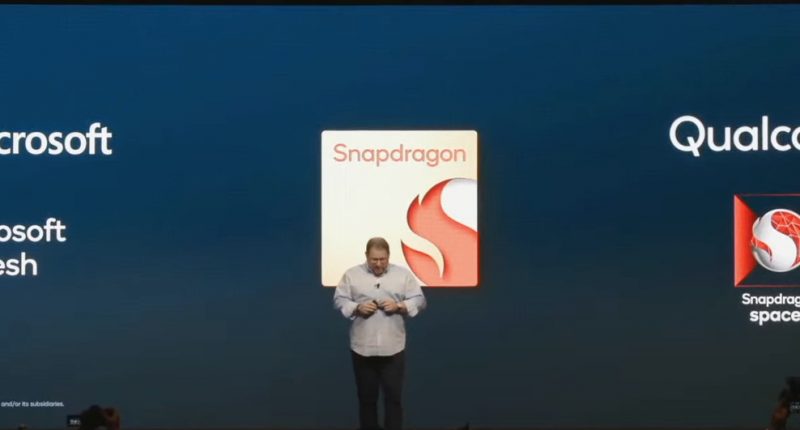Metaverse — a fancy term that translates to culmination of all things internet in a virtual world — has been perhaps been the tech word of the year for 2021. We have seen multiple companies making the push to tap into what is being termed as ‘the future of internet’. One such significant push is coming in today from CES 2022, which despite its pull-offs, started off on a grand note. At its CES 2022 keynote, chipmaker Qualcomm announced that it would be joining forces with Microsoft in order to co-develop a chip that would control lightweight augmented reality glasses for use by both consumers and businesses for metaverse apps.
On this note, both companies will be working on a new, customized Snapdragon AR chip to power future AR glasses. Additionally, they will be integrating their AR software — Microsoft Mesh and Snapdragon Spaces XR Developer Platform.
AR and VR technology have received a boost in recent times, attracting the attention of big players such as Facebook. Facebook even rebranded itself to Meta to highlight its focus on the Metaverse, which it believes to be the future of the internet. AR and VR technology remain the cornerstone of the Metaverse.
With the chips made by both Qualcomm and Microsoft, developers will be able to create virtual worlds in which people can work and play, according to Qualcomm CEO Cristiano Amon.
Where do Microsoft Mesh and Snapdragon Spaces come in? Mesh enables people to collaborate with one another with presence as if they are all physically present in the same room. It does that by letting users beam a realistic likeness of themselves into another user’s headset. Spaces let users create applications around the Snapdragon platform, Unity, Unreal and other technologies. It will help perform basic AR functions like mapping out physical spaces and hand-tracking. The combination of both the software will surely prove to be an interesting one and could be exactly what the new AR glasses need. In other words, it would do pretty much everything that one has come to define as metaverse.
This is not Microsoft’s first foray into the AR glasses space – you may remember the HoloLens AR glasses it had rolled out earlier. The new AR glasses are set to be more power-efficient and lighter. This is not the first time Microsoft has worked with Qualcomm either – it had partnered with the chipmaker to develop custom SQ1 and SQ2 chips for its ARM-based Surface Pro X devices.
“Our goal is to inspire and empower others to collectively work to develop the metaverse future – a future that is grounded in trust and innovation,” said Rubén Caballero, corporate vice president of Mixed Reality, Microsoft. “With services like Microsoft Mesh, we are committed to delivering the safest and most comprehensive set of capabilities to power metaverses that blend the physical and digital worlds, ultimately delivering a shared sense of presence across devices. We look forward to working with Qualcomm Technologies to help the entire ecosystem unlock the promise of the metaverse.”
If companies like Microsoft, Qualcomm, Meta, and others continue to bet big on the metaverse, then it might be closer than we think.
The Tech Portal is published by Blue Box Media Private Limited. Our investors have no influence over our reporting. Read our full Ownership and Funding Disclosure →






